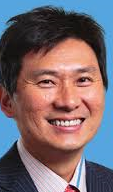Editor-in-Chief
 Nicola Maffulli, MD, MS, PhD, FRCP, FRCS(ORTH), Sapienza University of Rome, Italy
Nicola Maffulli, MD, MS, PhD, FRCP, FRCS(ORTH), Sapienza University of Rome, Italy
Prof Nicola Maffulli is a Consultant at Orthopaedic and Sports Injury Surgeons and is also Chair in Musculoskeletal Disorders in Sapienza University of Rome, School of Medicine and Psychology. Prof Maffulli holds an Honorary Chair in Sport and Exercise Medicine at Queen Mary University of London, and a Visiting Professorship in Trauma and Orthopaedic Surgery at Keele University School of Medicine. His particular scientific interests include the physiopathology of sports injuries and arthroscopic techniques of the knee, foot and ankle.
Deputy Editor
 John Furia, MD, Evangelical Community Hospital, USA
John Furia, MD, Evangelical Community Hospital, USA
Dr John Furia is a partner in SUN Orthopedics and Sports Medicine Corporation, located in Lewisburg, Pennsylvania. He is also Chairman of the Board of Directors and Chief Executive Officer of the Evangelical Ambulatory Surgical Center, president of the Union County Medical Society, and has served as president of Old Trail Imaging, LLC. Dr Furia practices orthopedic surgery and sports medicine and specialises in the use of shock wave therapy as a treatment for various musculoskeletal and sports medicine disorders.
Deputy Editor
 Peter V. Lee, PhD, University of Melbourne, Australia
Peter V. Lee, PhD, University of Melbourne, Australia
Prof Peter V. Lee holds a full Professor position at the University of Melbourne since 2015. He has held several leadership positions including Deputy Head and Acting Head of Department of Mechanical Engineering, and currently as the Deputy Head (Research and Engagement) of Department of Biomedical Engineering, and the Melbourne School of Engineering Research Program Leader for Medical and Pharmaceutical Technologies. He also leads the Cell and Tissue Biomechanics Laboratory in Engineering, where his research aims to better understand the behaviour of biological cells and tissues under mechanical forces.
